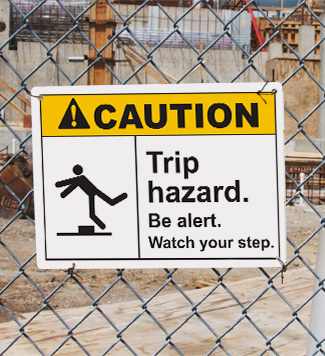Safety Tools for General Contractors
03
February,
2023
2 MINUTE READ
A general contractor steps onto a construction site with a list of daily expectations. Despite all the fun social media memes, there is no punchline here. A general contractor wears many hats as they assess project plans, oversee workers, and keep safety and efficiency in step. Contractors are busy, and they need practical tools and supplies that make the job easier.
Safety Goals and Strategies
One of the top responsibilities of a general contractor is to ensure safety measures are always upheld. The Occupational Safety and Health Administration in various regions throughout the U.S. are focusing on safety partnerships with contractors, trade associations, and other stakeholders to establish goals and strategies to improve worker safety.
In July, efforts in Montana addressed more than 60 worksite hazards after workers and contractors collaborated on a near-miss program. "This partnership serves as a model for how multiple employers can work together to ensure the safety and health of workers," said OSHA representative Art Hazen.
Some top focuses on injury prevention include:
- Falls: Prevention of slips, trips, and falls include best practices for getting in and out of equipment, proper ladder use, use solid footing, and uncluttered workspaces.
- Struck-bys: Avoid being hit or hitting another person when loading or unloading supplies.
- Personal Protective Equipment: Make sure PPE is sufficient for the conditions of the workplace. Remind workers to wear adequate eye and ear protection.
- Traffic: Be mindful of pedestrian and vehicle traffic in and around the worksite.
- Machinery and tools: Keep machinery and tools in working order. Inspect and maintain.
- Exposures: Alert workers to lead, silica, chemicals, and other potential worksite exposures.
Toolbox Essentials
 With these types of hazard and injury prevention focuses, contractors need to be ready to handle anything that comes their way. Contractors can meet partnership goals by increasing employee training, implementing best work practices, and creating site-specific written safety and health programs. Routinely host required safety meetings before the start of major work and complying with applicable OSHA standards and regulations.
With these types of hazard and injury prevention focuses, contractors need to be ready to handle anything that comes their way. Contractors can meet partnership goals by increasing employee training, implementing best work practices, and creating site-specific written safety and health programs. Routinely host required safety meetings before the start of major work and complying with applicable OSHA standards and regulations.
With all the duties a contractor has, it is important to have communication ready and, on the spot, to inform, warn, caution, and alert anyone on the site quickly. Evaluate areas that may present issues. Document hazards and put safety guards in place. Does the job require a label or sign? How about traffic signs, pipe marking, or electrical labels? Do not order from a catalog and wait for it to arrive; print it on demand with an industrial label and sign printer, such as the DuraLabel Toro. Create exactly what you need in minutes using templates that are customizable. Contactors will pay less per sign and can customize the content like adding a company logo and contact information or include a custom message for the client.
Do you need help leveraging the power of visual signs? Download our free Visual Workplace and Visual Management guide.
RELATED RESOURCES

Harwood Grant Deadline Soon
Nonprofits have until July 20 to submit applications for a piece of $11.5 million in grant funding from the ...
Read
Tips to Improve Silica Compliance
To further limit respirable crystalline silica dust exposure, OSHA is enforcing its rule for general, ...
Read
Worker Injuries Have Long-Lasting Effects
When a worker is injured on the job, the effects go beyond a simple report. Incidents can make tremendous ...
Read.png)


